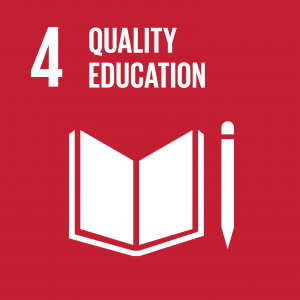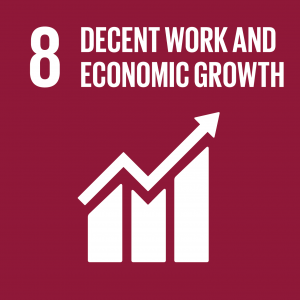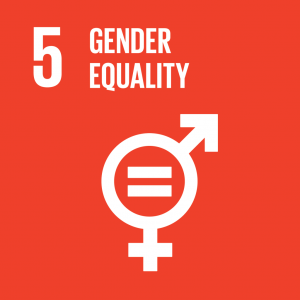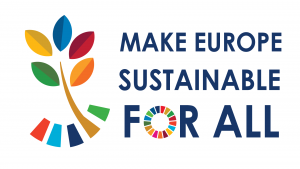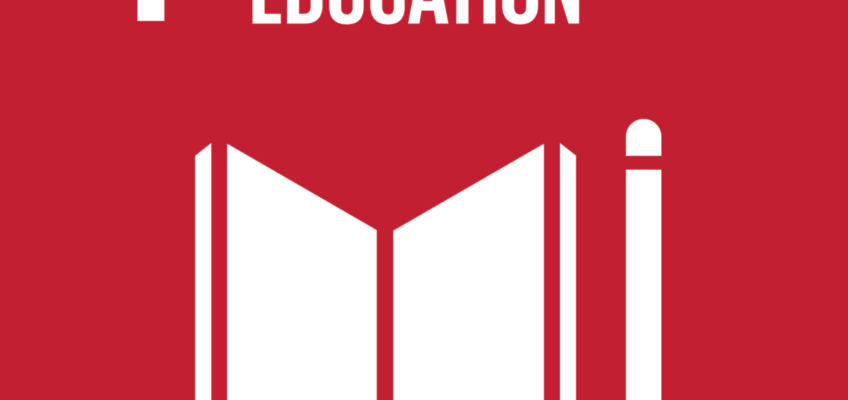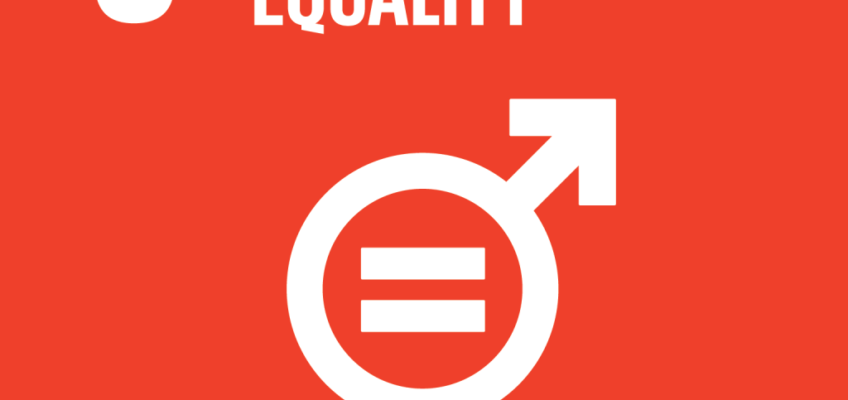Introduction:
The following toolkit is a methodological framework that contains alternative educational tools for global education based on 1. The experiential learning cycle and its different learning styles 2. The pedagogy of the oppressed 3. The Bennet scale of intercultural sensitivity and 4. The five principles of gender mainstreaming. It contains concrete tools and activities designed according to the feedback of different participants who took part in the meetings and seminars of integration in globalization and are researchers, NGOs staff and people with refugee and asylum seeking-backgrounds.
When exploring identity, we automatically assume that we have three different profiles of stakeholders. This automatic assumption comes from various external factors such as the normalization of various segregation in occupation and social status such as legal documents, gender and ethnicity. Therefore, we highlight that the mentioned profiles do not mean three different groups as one group can represent the three different profile at once. A refugee, a researcher and an NGO worker might be one person or three persons.
Integration in Globalization, is part of bridge 47 in Slovenia. Bridge 47 was created to bring people together to share and learn from each other. It mobilizes civil society from all around the world to contribute to a transformation towards global justice and eradication of poverty through Global Citizenship Education. Integration in globalization is an educational framework that gathered people with various backgrounds from research, NGOs and migration backgrounds.
Training on the implementation of cultural ethnography in research design
Aim of the training: the training aims to enhance global competences within the scope of SDG 4.7. This is in order to conceptualize research design on integration and migration policies and programs from the point of view of its end users.
Participants: 15 to 20 participants. Coming from research, NGOs and migrant backgrounds. You can minimize the activity scales to be for two to three participants. This will shorten the length of implementation, yet all activities are able to be resized based according to the number of participants.
Length: 120 minutes recommended break: 15 minuets
Ice breakers – name game: “beyond time” For this exercise you need a clock sat on 30 seconds. You ask the participants to form a magical circle. You explain the concept of magical circle. A circle where you stand next of people you do not know or you do not really know, or you know them less than others. You ask the participants to close their eyes and to open them when they think that the 30 seconds finished. Each person that finished counting open their eyes and look to the clock to see if their inner time matched the clock time. Every person after opening their eyes shall wait till the person on their right open their eyes and then they take a printed list of questions in the middle of the circle and thy go aside to answer it in pairs. The questions: 1. Share your names and your dream job as you were a child? 2. What was your inner time what was the clock time? 3. What time means to you and why? Later on, you ask the pairs to present each other shortly to the rest of the group.
Ice breakers materials needed: A4 papers with list of questions printed on it. Clock with timing or projector with timing on screen.
Team building activity: A flower for each, you ask the participants to form another magical circle as much as possible. A magical circle where you stand next of people you know the least. You group people in groups of four to three people of each. You ask them to draw a flower with petals and middle circle. You ask them to identify their individual reasons of being in this training, their individual expectations, needs and potential contributions. Their views on potential challenges they might face. You ask them to gather cross-points and similar points in the middle of the flower. You ask each group to present shortly their common points to the wide group.
Materials needed for the team building activity “A flower for each”: flipcharts and markers.
Cultural ethnography from theory to practice: you prepare a visual presentation on cultural ethnography starting from why, what, where to how.
Why? Theories regardless of their grounded reasons are not necessarily on size of all. Heterogeneity is a spectrum that changes within the scope of time and space. Cultural ethnography is a must to debunk, approve, adapt or create totally new theories on policies of integration and migration from the lenses of its end users. Cultural ethnography provides a solution for homogeneity in policies design and implementation.
What? The inclusion of end users of integration and migration policies not only in the research design but also in the conceptualization of the subject matters. Where? It happens within a cultural setting that belong to the end users of this programs, in relation to the realities of them. What if you belong to this reality? In some context assuming that a common language or ethnicity or similar geographical contexts mean common values and habits can lead to self-fulfilling prophecy. This can be a cause for miss communication and miss conception in research design. Therefore, cultural ethnography is not only important when searching on different cultures but also one’s culture.
How? various tools can be used as means of observation and inductive reasoning, such as coaching tools for questions design, generating themes and words using abstract visual symbols to conceptualize the studied matter as integration or asylum. Validating asylum policies in contextual analyzation, this is by creating open end question that leads to other questions.
Creating an experience, role game playing “in my shoes”: in this part of the exercise you create three subthemes of interest: 1. Validation of the concept of Asylum from theory to individual practice. 2. Measuring integration programs from written aims to real results coming from end user 3. Recognition of educational and professional knowledge of refugees. You ask the participants to form groups based on interest, you assist them by asking them to stand in the side of the room where this theme is located as a print out on the ground. You divide the participants in groups. Each group consist of three persons. You print out the right of asylum in the EU “The aim of the EU’s asylum policy is to offer appropriate status to any third-country national requiring international protection in one of the Member States and ensure compliance with the principle of non-refoulement”. Role playing will be distributed among the members in each group that chosen this topic. The roles are female asylum seekers, minor asylum seeker, male asylum seeker from non-war zone, researcher and NGO worker as an observer for the process. Every group shall exchange roles within their members while leaving the role of NGO worker as an observer to collect information and give feedback to the other role players. The role of the researcher is to create appropriate questions to: conceptualize the concept of asylum and test its implementation in the individual played story. Each participant in each subgroup shall play one of the roles in one round. At the end of each round the observers give feedback on how the process was going. The role of the asylum seeker is to visualize challenges, answers and-or obstacles when answering the questions of the researcher. All the other subthemes groups follow the same structure. For the second subtheme you print the following aims for the integration programs in the EU: The Plan includes actions across all the policy areas that are crucial for integration: 1. Pre-departure and pre-arrival measures, including actions to prepare migrants and the local communities for the integration process. 2. Education, including actions to promote language training, participation of migrant children to Early Childhood Education and Care, teacher training and civic education. 3. Employment and vocational training, including actions to promote early integration into the labor market and migrant’s entrepreneurship. 4. Access to basic services such as housing and healthcare. 5. Active participation and social inclusion, including actions to support exchanges with the receiving society, migrants’ participation to cultural life and fighting discrimination. You ask the participants to first read the written aims and then to think about it before starting the role playing. You remind the participants about the aim of this exercise as an evaluative measure to existing integration programs. The roles for the second subtheme are: 1. female Muslim refugee wearing headscarf 2. A child who is enrolled in elementary school and in Slovenia as a refugee for three years. 3. Researcher 4. NGO worker as observer.
Self-reflection: print out a series of questions to assist the self-reflection journey of each participants. Reflecting on the experience: think about how you felt or thought in each role you played? What did you experience during the conversation on the certain topic of your choice? What changes appeared in your thoughts or emotions during the conversations? What are the reasons of these changes? Reflecting on learning: What are the things that you realized that you know? What are the things or new feelings you experienced? How these new things can be useful to you? What other gains you gained in this experience like new contacts, information or ideas? How these new gains can be an assist to your personal and-or professional life?
Group refection: ask each group to share their feelings, thoughts and experience during their subgroup work to the wider group. Ask the participants to recall the concept of cultural ethnography in research on integration and migration programs and policies. Why it is important to each role proposed in the role play game? how they felt while trying to read concrete programs and policies and trying to connect it to individual cases from reality? there were any gaps? What and why these gaps exist from their own point of view? Do they witness these gapes in their work, personal life or social networks? How these gapes affect them or affect their work or people that they know?
Recreation of real-life scenarios: you divide the participants in subgroups of three, asking them the following questions. What was something new that you learned? Can you recall a real-life scenario where you did not know these new things that you learned? How these new things you learned about for example an integration program that you did not know, or a concept regarding asylum, or a concept of building inclusive research design can be helpful in real life scenarios in your personal life, your work or your support to your social networks? You ask the sub-groups to share optionally with the wider group any thoughts, feelings or findings.
Evaluation: ask the participants to come back to their flowers from the team building exercise “a flower for each” ask them to evaluate whether this training met their expectations and needs. What were the strength points and what could be done better? Print out a set of questions to analyze each implemented exercise. What something they have learned? How the logistics and time and space management was according to their comfort and needs? Was there an active environment for active and equal participations for all? Open the evaluation to the wider group and give the opportunity for anonymous evaluation through online or offline forms.
Seminar on gender mainstreaming in research design of research on integration programs
Aim of the seminar: capacity building of global competences within the scope of SDG 4.7 from the lens of gender mainstreaming through sharing experiences from personal and professional lives within an intercultural context.
Participants: participants who are researchers, NGOs members and migrants with refugee status. 15 to 20 participants. The exercises can be modified according to the number of participants.
Length: 180 minutes. Recommended break: 30 minutes.
Ice breaker-name game: you ask the participants to walk randomly in the room while keeping social distance. When you say stop the participants shall form a group of the number you indicate. For example, three people or four. People who are not affiliated to any group shall say their names with a move or sound that represents them and leave the game. You continue the exercise till all people have the turn to say their name and make their move or sound.
Team building activity, “beyond gender”: print visual photos that are abstract and can be interpreted differently by different people. Stick a number at the back of each photo from 1 to 4. Ask the participants to observe these photos and pick a photo that represent gender and gender justice to them. After each participant pick one photo you ask them to check the number in the back and to make a group with people who has same numbers. In the sub group you ask them to present again themselves and names and to explain why they picked this photo. You ask each sub-group to share among themselves their expectations and needs from attending this training, their potential contributions and the challenges they think that they might face. You ask each group to give a summary of common points regarding expectations, contributions and challenges to the wider group. You prepare rules of the group trusting and team working regarding privacy, active listening and you ask the participants if there are any further rules that shall be added or respected.
Gender mainstreaming of integration programs: you start with a visual presentation of the concept and the five principles of gender mainstreaming: 1. Gender-sensitive language 2. Gender-specific data collection and analysis 3. Equal access to and utilization of services 4. Women and men are equally involved in decision making 5. Equal treatment is integrated into steering processes. Recommended resource:
https://www.wien.gv.at/english/administration/gendermainstreaming/principles/five-principles.html
you present the following sub themes in connection to integration programs between migrants and locals in the Slovenian society. You distribute the subthemes as A4 prints in different locations in the room. Suggested subthemes: 1. Integration programs to promote social cohesion, interculturalism and combat xenophobia 2. Integration programs for children access to schooling and education 3. Recognition programs of knowledge and skills of refugees 4. Integration in labor market 5. Language programs 6. Measures taken for housing of refugees. You ask the participants to stand in the spot of their interest. You form with participants sub groups of two to three people. In the subgroups, the teams have tasks. These tasks are to discuss the concept and the importance for each program or topic within the scope of integration. You ask them to share about concrete programs or measures they took part in or they know about. You ask them to analyze the structure and the implementation of this programs from the lens of gender mainstreaming, how it affects man, women and children differently? They identify the strength points and what could be done better in order to enhance the aims and the importance of these programs. You can prepare the set of questions and distribute it to the subgroups to ease their process of discussion and team work. It is important to clarify for the participants that they can add to the questions or share extra information according to their experiences. After subgroups work finishes you ask each group to present to the wider group their findings. You facilitate the discussion by giving time for presentation while giving the space for questions.
Self-reflection on self-contributions: print out a series of questions to assist the self-reflection journey of each participants of self-contributions. This is an essential part to finalize the previous activity and prepare a mind-set for further solution-oriented group work. Reflecting on the experience: think about how you felt or thought during the conversation? What did you experience during the conversation on the certain topic of your choice? What changes appeared in your thoughts or emotions during the conversations? What are the reasons of these changes? Reflecting on learning: What are the things that you realized that you know? What are the things or new feelings you experienced? How these new things can be useful to you? What other gains you gained in this experience like new information or ideas? How these new gains can be an assist to your personal and-or professional life? What are the things you contributed with in the conversation? What can be more to be contributed with from your side? What more ideas you can share now after you know what resources and or support you can gain from this group?
Subgroup work on solutions: you ask the participants to come back to their initial groups. you distribute the following questions printed on A4 papers as follows:
For groups who decide to work on research:
Choose one issue or challenge to work on from your previous subgroup topic.
Title
What could be a title of a research that can bridge the gap between Asylum policies and its implementation?
Target groups
What are the target group(s) who will benefit from this research? How it would be beneficial to them?
Methodologies
What are the needed methodologies for the achievement of this research? What ethical research principles it would follow?
Stakeholders and resources
Who are the stakeholders who we need to achieve this research?
Channels and methods to reach target groups and stakeholders?
Impact and significance
Why this research would be significant? what problems it might contribute in Solving?
Where the research would take place and an approximate timeline to achieve it?
For groups who decide to work on social initiatives or NGOs work:
Choose one issue or challenge to work on from your previous subgroup topic.
Think of a possible solution or an initiative to overcome this problem in Slovenia.
What is the title or slogan of this initiative or solution?
Who is the target group? Who will take part in the implementation? Who will be the recipients or the direct participants of these activities?
Who are the partners that you need to complete this initiative? Partners from institutions, bodies or individuals?
What support does the implementation of this initiative or solution require?
Why should we support or implement this initiative or solution? What are the desired results and impact in short and long term?
After the finalization of subgroup work, you ask each group to present their initiatives or research idea to the wide group. You open the space for the wide group by asking about who is interested in taking part in this idea, how you think you can support it? Do you have any questions? Do you have any advices or ideas for the further development of this research idea or intuitive or program?
You wrap up the presentation by summarizing key findings and points and announcing a space for further networking as lunch networking or coffee networking after the group work. You ask the participants about ideas or suggestions on how to create a channel to keep further communication between the members of this group like emailing list, WhatsApp or Facebook groups.
Evaluation: you ask the participants to come back to their subgroups in the team building activity “beyond gender” you prepare a set of questions for each group to analyze and evaluate each activity. Did it meet my expectations and or need? Something I learned? Best part? Something that could be done better? What was the best activity and why? What activity could have been designed or implemented better? Open the space for wider group evaluation and for anonymous evaluation through online or offline forms.
Summary and conclusion
Integration in globalization is an educational framework that starts from intercultural and experiential learning. It is developed according to the concept of the pedagogy of the oppressed and gender mainstreaming to combat visible and invisible inequalities in the journey toward global education. This program gives an ownership to its end users by validating concepts of asylum and integration through cultural ethnography. This is by creating an equal and inclusive educational and exchanging spaces between people who are researchers, NGOs workers, asylum seekers, refugees and migrants. The program opened space to provide recommendations and feedback to asylum policies and integration programs from the end-users of these. It opened a rich educational space for researchers to enhance intercultural sensitivity, cultural ethnography, and gender mainstreaming in their future research designs on asylum policies and integration programs. It opened an engaging environment that encouraged participants to find and create new solution-oriented ideas either through research or through the work of civil society organizations.
For questions or feedback feel free to contact us
Samar@povod.si
Intercultural trainer
Povod institute for culture and development of international relations in culture
www.povod.si

